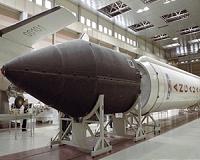 |
Solna, Sweden (SPX) Jan 28, 2011 The year of 2011 will be full of interesting space missions at Esrange Space Center - Swedish Space Corporation's (SSC) operational base for rocket and balloon launches, testing of new aerospace vehicles as well as control and operations of satellites. Seven international rocket campaigns - We are looking forward to a very busy year with seven big rocket launches. All flights are performed to obtain scientific measurements within various disciplines. In February, two student rockets REXUS 9 and 10, are planned to be launched. European university students will fly their own experiments designed and built within their university study programmes. This REXUS programme is funded by the Swedish National Space Board and the German space organization DLR. PHOCUS, is run by a Swedish team from the Department of Meteorology at Stockholm University, led by Professor Jorg Gumbel. The rocket will be launched this summer with the aim to study the interaction of particles in the atmosphere and their chemical environment. This mission is funded by the Swedish National Space Board. Four microgravity rockets will be launched during 2011. TEXUS 49 in March/April (funded by DLR), MAPHEUS-3 in May (funded by DLR) and in November MASER 12 (funded by ESA) and TEXUS 48 (funded by ESA and DLR). The provided microgravity time varies between 3 and 7 minutes depending on the rocket motor used.
Five international balloon campaigns Most of the balloon flights have the aim to conduct scientific measurements and others will perform technical flights to develop the launch technique itself. Simultaneous measurements will be performed from our ground based instruments at Esrange Space Center. One of the scientific balloon flights - PoGoLite - will be circumpolar and fly around the North Pole at an altitude of 40 km. PoGoLite, that will carry a telescope, is a Swedish mission, funded by the Swedish National Space Board and led by Mark Pearce, Professor of Physics at the Swedish Royal Institute of Technology. PoGoLite stands for"Polarised Gamma-ray Observer" and the Swedish team is collaborating with science teams from the U.S. and Japan. PoGoLite will open a new window to Universe by measuring the polarization of gamma-rays (photons with very high energies). The research team will study neutron stars, active galactic nuclei and black holes.
Three new satellite missions Most of these satellites have a scientific objective and they are owned by customers from all over the world. SSC provides satellites services such as ground control, routine support and reception of scientific data or satellite images. To secure the accessibility to the ground communication systems, SSC has installed several new antennas in the last years. At the end of 2011 another three antennas will be in place at the site. In total there will be 25 full motion and 4 limited motion antennas for satellite communications. SSC also offers reliable solutions for satellite operations world wide. Besides operating the busiest civil ground station in the world at Esrange Space Center, SSC also give customers access to PrioraNet, a global network of ground stations in strategic locations around the world.
Share This Article With Planet Earth
Related Links Swedish Space Corporation (SSC) Launch Pad at Space-Travel.com
 Russia Plans To Build Carrier Rocket For Mars Missions
Russia Plans To Build Carrier Rocket For Mars MissionsMoscow (RIA Novosti) Jan 27, 2011 Russia's Khrunichev research center plans to develop a new super-heavy carrier rocket that will be used to launch piloted spacecraft to Mars. "The super-heavy carrier rocket will be based on the design of the Angara rocket and its modifications - Amur and Yenisei," Anatoly Kuzin, deputy general director of the Khrunichev State Research and Production Space Center, said. Angara rocket ... read more |
|
| The content herein, unless otherwise known to be public domain, are Copyright 1995-2010 - SpaceDaily. AFP and UPI Wire Stories are copyright Agence France-Presse and United Press International. ESA Portal Reports are copyright European Space Agency. All NASA sourced material is public domain. Additional copyrights may apply in whole or part to other bona fide parties. Advertising does not imply endorsement,agreement or approval of any opinions, statements or information provided by SpaceDaily on any Web page published or hosted by SpaceDaily. Privacy Statement |